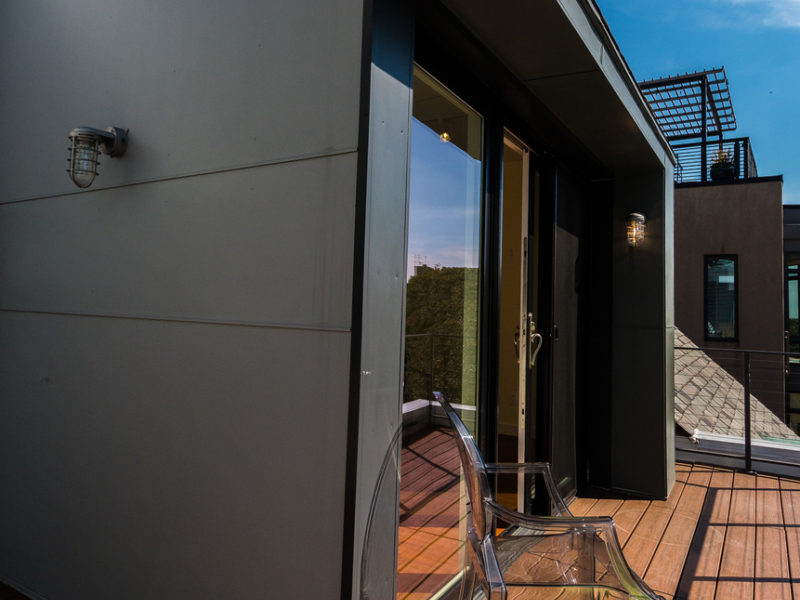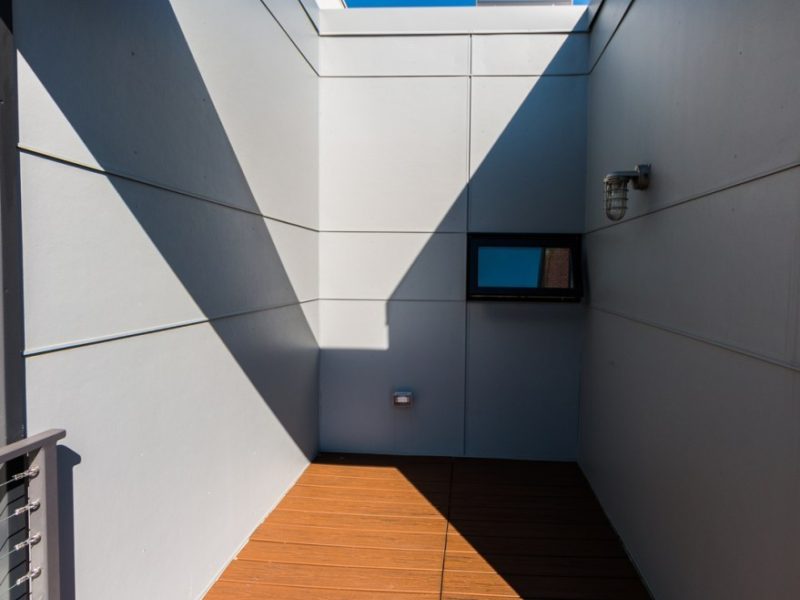Building an Urban Deck
A Town House Rooftop Becomes a Platform for Outdoor Space
Many urban row house dwellers can gain an outdoor space by claiming a low roof for use as a second-story deck. One candidate for this project is a two-story town house with a flat-roofed, one-story rear projection.
The design shown here places a new wooden deck on top of the flat roof and extends the existing brick walls upward to partially enclosed the deck as well as to support railings. Lightweight decorative steel columns and beams top off the brick walls. These create a gazebo-like effect that provides support for plantings or vines, which in turn can help screen the deck from neighbors’ views.
Decks are commonly constructed with pressure-treated southern pine or other weather-resistant woods and are often left open beneath. For row houses, however, those construction materials and techniques must be modified to meet fire prevention and structural requirements of building codes. But these constraints needn’t restrict the design options, and using different materials that recall traditional rails, columns and other forms of wood trim can create an innovative but simple aesthetic.
In this example, the side or party wall of the one-story projection sits on the lot or property line (called face-on-line construction). Codes require these party walls to be of noncombustible construction throughout, and any vertical extension on the property line, whether deck or wall, must conform with this stricture. Columns and beams above the walls will also sit on the building edge and likewise must be built with noncombustible materials. On the other hand, codes allow the deck surface (decking)and the structure underneath to be built with wood if the attached dwelling is single-family. There are exceptions to all these requirements, some stricter and some more lenient, so local building code officials should be consulted before design and construction begin.
Building the deck shown here involves five basic steps. First, the existing roof rafters must be checked by a professional to make sure they can support the added weight of the deck. If necessary, they will have to be strengthened with additional rafters, Next, the new brick walls are on top of the existing walls and foundation. The wall is continuous along the lot line side and is broken on the other two sides to allow metal railings to be installed.
The third step, after the old roof has been peeled off, is to install a new roof and flashings using metal or copper sheets, rubber membranes or other materials available through roofing suppliers. After the roof is complete, the deck itself is built using pressure- treated joists running front to back. Since the actual roof has a slight slope to it for drainage, these joists (called sleepers) are cut at an angle along their bottom edge to make the deck surface level.
The deck surface consists of 1-by-6 pressure-treated decking nailed across the top of these sleepers. A common practice is to cut the sleepers into short (two-to four-foot) lengths and nail the decking across to form pallets, which can easily be removed when the roof needs maintenance. For access, a French door with one step up onto the deck replaces a window.
Finally, the steel columns and beam are set into the brick walls using metal anchors and bolts. Lengths of steel pipe are run from side to side overhead to provide support for shade plants.
Norman Smith practices in the Washington area. For help with your design problems, send snapshots and dimensions to him in care of info@taurusdev.com

